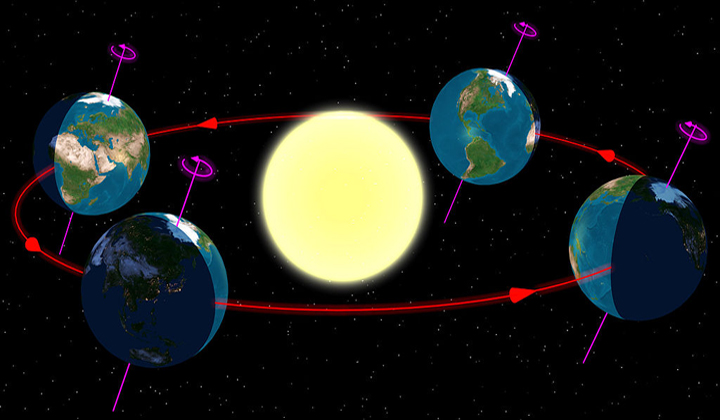You’ve probably noticed that the daylight hours have been slowly shrinking away. That’s because winter is around the corner. But first, there’s fall, which starts with the fall or autumnal equinox.

Many people believe that we get the seasons based on the distance Earth is from the sun. But that’s not the case. In fact, we are closest to the sun in January and farthest from it in June.
It’s Earth’s tilt that is responsible for our seasons. It’s also responsible for the equinox.
You might remember learning that Earth tilts on its axis at an angle of 23.5 degrees (that’s relative to its orbital plane) from the north to south poles. And because of that, as we revolve around the sun, the way the sunlight falls on Earth changes.
When we are tilted towards the sun — in the summer — we receive more direct sunlight, thus the warmth. Tilted away — in winter — and that sunlight doesn’t hit us straight on and gives us the chilly weather.
Now, during equinoxes, the rays of the sun shine directly over the equator.
So does that mean we get 12 hours of sunshine and 12 hours of darkness? That all depends on where you are.
In spring, equal hours of day and night can vary anywhere from between 3 to 21 days before equinox. In the fall, that can be about 3 to 21 days after.
The good news is that as the sun continues to move southward and the daylight hours become nothing but a distant memory as we are confined to the warmth of our homes and offices, there is an end in sight. As of December 21, the sun will once again begin its northward trek and the days will once again get longer.
Watch: Get the best out of fall
- Roll Up To Win? Tim Hortons says $55K boat win email was ‘human error’
- Ontario premier calls cost of gas ‘absolutely disgusting,’ raises price-gouging concerns
- Bird flu risk to humans an ‘enormous concern,’ WHO says. Here’s what to know
- Election interference worse than government admits, rights coalition says











Comments